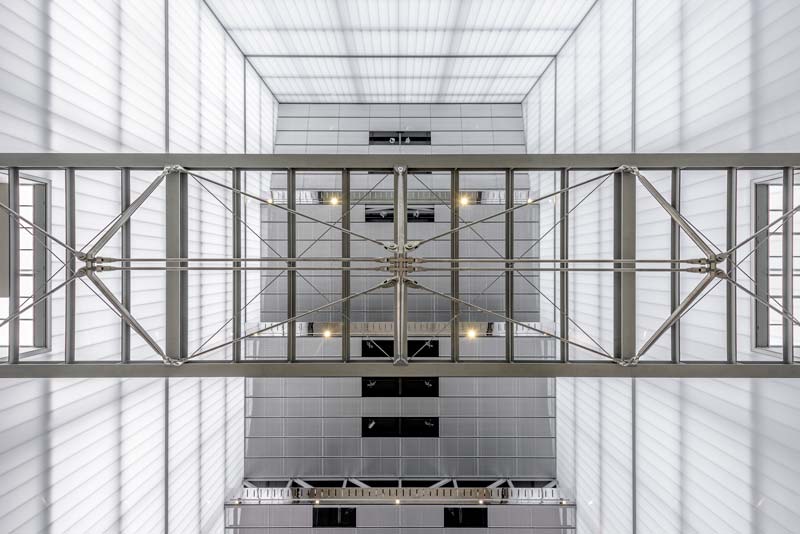Tensile Architecture (also known as Lightweight Architecture) is the use of lightweight elements in tension to provide support to a structure such as a bridge, roof, or façade. Sometimes these elements are cables, and other times they are rods (which are also often referred to as bars). A question we are often asked is when to choose one or the other.
When considering this question for your application or design, it is helpful to understand some of the key differences between cable and rod.
Stretch – Stretch (also known as stiffness) is a measure of how much an element or member in tension changes in length for a given load. Rods usually have much lower stretch than a cable of the same diameter. Typically rods or bars have between 30% – 75% less stretch than cables depending on the cable construction. (Cable construction refers to the number and layout of the individual wires or strands comprised within a cable).
Strength – For a given diameter, and material type (carbon steel or stainless steel), cables will often have a higher strength than rods. The process of manufacturing the individual wires within a cable has the effect of significantly increasing their strength, when compared with the raw material. When wound into finished cable, the strength is higher than the same diameter rod, even though the cable has less metal overall in its cross section (due to gaps between individual strands).
Transport and Handling – Cables can be coiled up for transport although the diameter of the coil varies by cable construction and diameter. Rods need to be transported and handled in straight sections. For lengths over 3m / 10ft, rods are often provided in segments to reduce transport costs and make them easier to handle on site. Depending upon the diameter, cable lengths in excess of 30m / 100 ft are possible.
Installation – Installing rods is generally a more involved process than installing cables. Rods need to be fully supported along their length, especially when they are being lifted or installed at, or close to horizontal. This can require the use of lifting beams and cranes. The process and equipment needed for tensioning is also often more elaborate for rod systems.
Support of Lateral Loads – Using clamps or guides, cables can support lateral loads being applied at 1 or more points along their length. Rods themselves are not capable of this. If lateral load needs to be supported, then it is necessary to stop and start the rod and apply the load at the junction point (known as a node).
Surface Treatment / Surface Finish – Rods can be painted to match surrounding steelwork if required. Painting of cables is generally avoided. Stainless steel rods can also be highly polished, which is a desirable aesthetic for some projects, and can also help improve overall long-term corrosion resistance.
Minimum Length Requirement – Cables have a minimum amount of cable that needs to be exposed between the two end fittings to allow the cable to be fabricated without the wire bunching up (an effect known as ‘bird caging’). Rods do not have this limitation, allowing shorter lengths to be achieved for a given diameter.
Supporting Self weight – Cable is much better at supporting its own weight over longer distances. The individual wires in the cable adjust to allow the cable to support its weight in tension. Rods, on the other hand, support their own mass by acting as a beam (in the same way that steel and timber beams support themselves).

Rods are often favored in situations where the deflection of the system needs to be more tightly controlled, such as facades, some types of roof structures or bridges, and where colour-matched elements are desired.
Cables are often favoured where the lengths are longer, the tension element needs to support lateral loads or close to horizontal, or where the tension element needs to support lateral loads. Examples include: Catenary lighting (supporting lights with cables), suspension bridges, and roof support where long lengths are required (stadium roofs as an example).
Whether you are looking for general information, or have a specific project in mind, the knowledgeable and helpful team at Ronstan is ready to help turn your ideas into reality.
All images © Ben Guthrie, The Guthrie Project